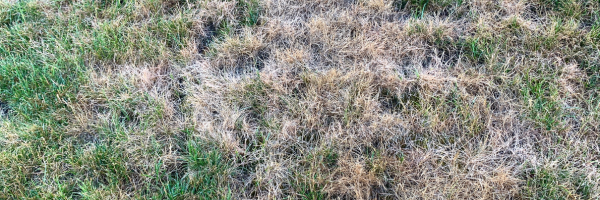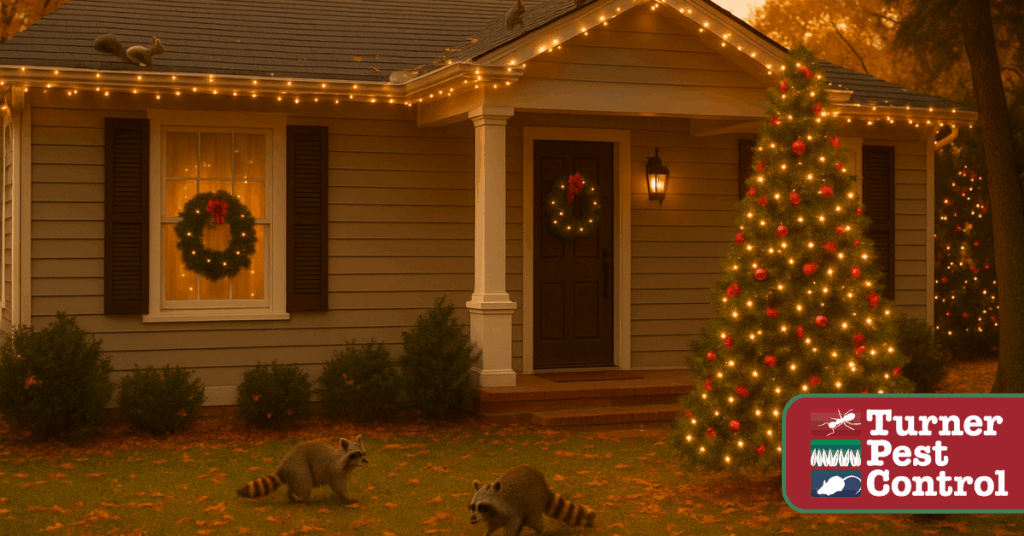
There’s no denying the weather – even here in Florida – is beginning to get chillier. While you might be getting less use out of your lawn as it continues to get colder and colder, lawn health and maintenance is a year-round endeavor.
Lawn dormancy season is upon us, which might have you thinking you’re in the clear when it comes to taking care of your yard. That isn’t quite the case as the cooler temperatures can be a threat to your lawn’s root system.
You’ll notice that everyone’s lawns are starting to look a bit less green each week. This is normal given the declining temperatures, but it’s what’s below the surface you need to worry about. If you want your grass to come back strong and healthy next spring, you’ll need to set it up for success going into the winter.
Understanding Lawn Dormancy in Florida
Why Do Lawns in Florida Go Dormant?
Florida’s climate is characterized by warm temperatures and high humidity for most of the year. However, during the winter months, especially in the northern regions, the temperature can drop significantly. This shift in weather patterns prompts many types of warm-season grasses commonly found in Florida lawns to enter a dormant state. This is a natural adaptation mechanism for these grasses, which allows them to conserve energy and survive the cooler weather.
Some areas of the lawn will brown while others stay green – areas like around the house, fence lines and trees with canopy, will typically have greener grass because the soil temperatures in these areas are warmer.
Types of Grasses That Go Dormant
Florida lawns typically consist of warm-season grasses such as St. Augustine, Bermuda, Zoysia, and Centipede grass. These grasses tend to go dormant when the temperature drops below their optimal growth range, which is usually around 50°F (10°C).
Preparing Your Lawn for Dormancy
Fertilization Timing
Fertilizing your lawn in late summer or early fall is crucial for building up the grass’s energy reserves. This step is essential as the grass will rely on these reserves during dormancy. Avoid late fall or winter fertilization, as it may stimulate unnecessary growth when your lawn should be conserving energy.
Proper Watering Techniques
During the winter months in Florida, rainfall is generally lower, and you may need to supplement it with occasional irrigation. Be mindful not to overwater, as this can increase the risk of disease. Watering your lawn once per week, 30-45 minutes per lawn zone is typically sufficient to maintain the health of your dormant lawn. Only water when temperatures are above 40 degrees to avoid unnecessary damage.
Clearing Debris
Remove fallen leaves and other debris from your lawn. A layer of debris can create a moist environment that invites pests and diseases. Keeping the lawn clean will help ensure a healthier lawn when spring arrives.
Pest Control Measures
Keep an eye out for pests such as grubs and mole crickets. Applying pest control measures in the fall can help prevent these critters from damaging your lawn during dormancy.
Weed Control
Dormant lawns are vulnerable to weed infestations. Applying a pre-emergent herbicide in the late summer or early fall can help reduce weed growth during the dormant season. The weed population will be more noticeable due to winter weeds continuing to grow while the grass remains dormant and doesn’t grow.
Winter Lawn Care Practices
Refrain from Mowing
Once your lawn has entered dormancy, avoid mowing as much as possible. The grass isn’t actively growing, so mowing it can cause stress and potentially damage the lawn.
Minimize Foot Traffic
Reducing foot traffic on your dormant lawn is a key practice. Walking on the grass can damage the blades, and compact the soil, which inhibits healthy growth when spring returns. Additionally, when it comes to lawn fungus, if you walk through an infected area of the lawn into another, you will spread the fungus.
Maintain a Clean Lawn
Continue to clear away any debris, leaves, or fallen branches throughout the dormancy season. This keeps your lawn clean and helps prevent disease and pest issues.
Watch for Signs of Stress
If your lawn shows signs of stress, such as abnormal discoloration or thinning, it may be worth considering additional measures like a light irrigation to provide some relief.
Spring Revival
Resuming Regular Maintenance
As the weather warms up, and your grass begins to emerge from dormancy, resume regular lawn care practices. This includes mowing, fertilizing, and watering based on the specific needs of your grass type. Lawns will generally green-up in the springtime when warmer temperatures remain consistent.
De-thatching and Aerating
Consider de-thatching and aerating your lawn in the early spring to promote healthy root growth and enhance nutrient absorption.
Down to the Root of it
Lawn dormancy in Florida during the colder months may seem daunting, but it’s a natural occurrence in the world of lawn care. By understanding the needs of your specific grass type and following the proper guidelines for preparation and maintenance, you can ensure a successful dormancy season and a vibrant, healthy lawn in the spring. With these tips in your arsenal, you’ll be well-prepared to navigate Florida’s unique winter lawn care challenges, ensuring your lawn remains an inviting, lush carpet year-round.
If you still find yourself asking, “why is my lawn brown?” check out some of our other resources in the lawn section of our blog or give us a call at (800)225-5305.



